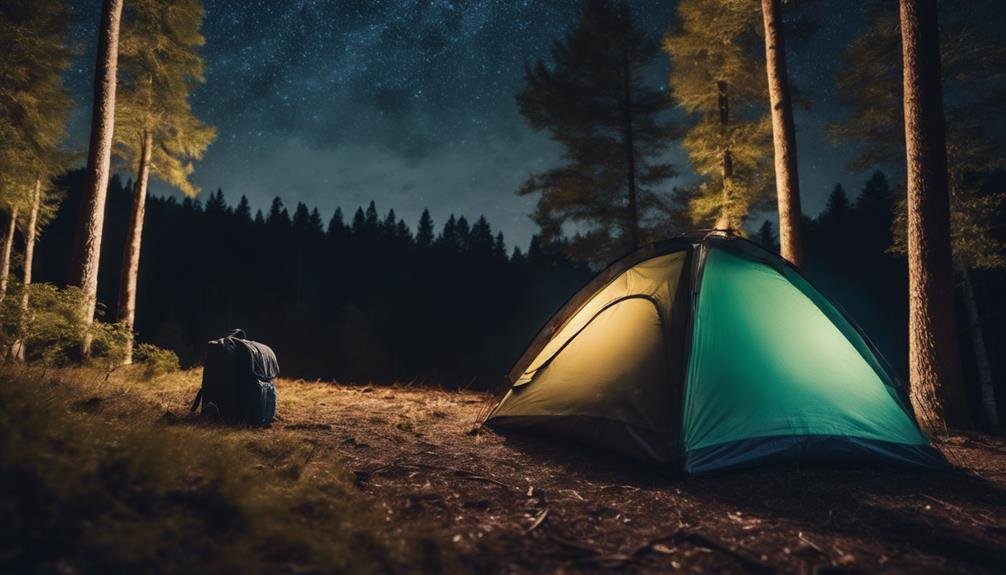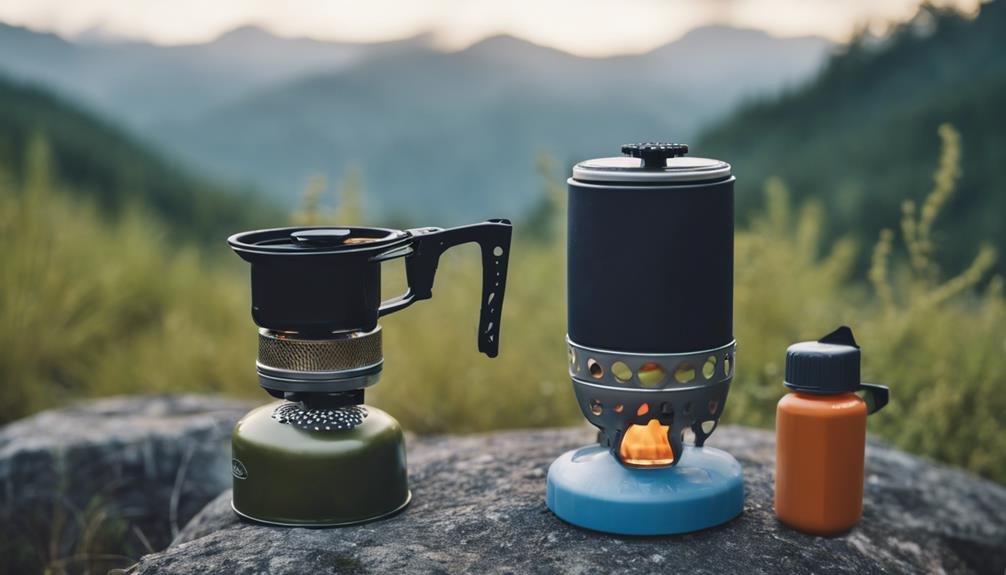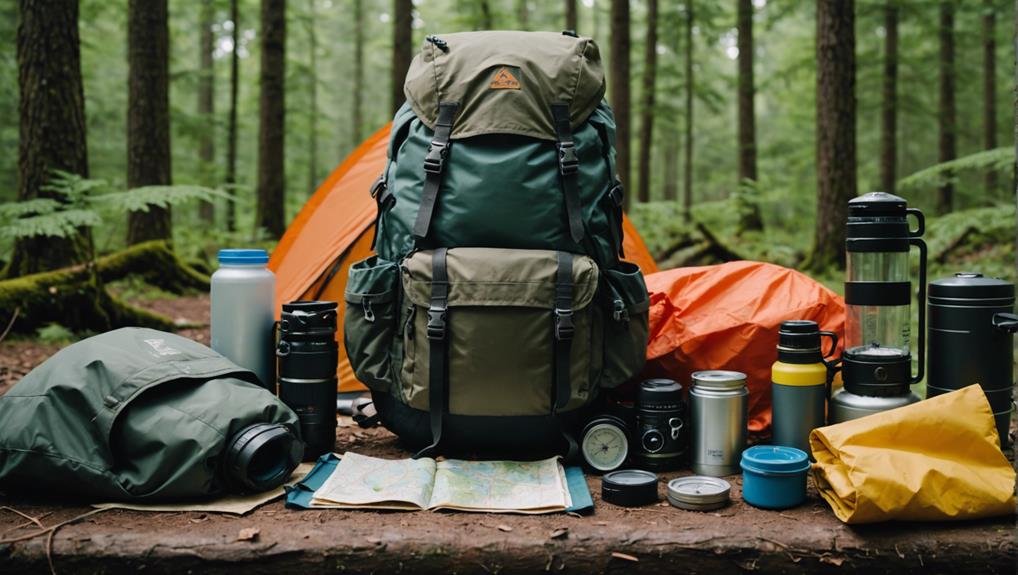As you start on your first backpacking gear list adventure, you’ll find the importance of selecting the right gear cannot be overstated. From choosing a backpack that fits your body and your trekking needs to understand the nuances of lightweight tents and sleeping systems, each piece of equipment plays a pivotal role.
You’ll also need to contemplate footwear that can handle varied terrain and weather conditions alongside a cooking system that suits your culinary preferences in the wild. But how do you balance quality with cost and weight with durability? Let’s explore what you must look for to make informed choices that enhance your outdoor experience.
Key Takeaways
- Opt for a 50-70 liter backpack made of lightweight, durable materials like ripstop nylon.
- Choose a well-insulated sleeping bag and cushioning pad for comfort and warmth.
- A reliable water filtration system, such as Sawyer or Katadyn, is crucial for safe hydration.
- Invest in a lightweight, durable tent like the Nemo Dagger, which is suitable for expected conditions.
- Ensure you have a compact cooking system like Jetboil or MSR for efficient meal preparation.
Essential Backpacking Gear
When starting your backpacking journey, it’s important to invest in essential gear that guarantees safety, comfort, and efficiency on the trail. As you prepare for your first backpacking trip, a quality tent should be at the top of your gear list. This is your primary shelter from the elements, so choose one lightweight yet durable enough to withstand various weather conditions.
Next, don’t skimp on a good sleeping bag. Make sure it’s suitable for the temperature ranges you’ll encounter. A bag that’s too warm or cool can make your nights miserable, affecting your energy and overall experience. Coupled with a sleeping bag, a sleeping pad is vital. It’s not just about comfort; a pad provides necessary insulation from the cold ground, essential for a restful sleep.
Lastly, a reliable water filtration system is indispensable. You’ll often find yourself far from clean water sources, and staying hydrated with safe drinking water is paramount. These essential items will not only enhance your experience but also help ensure you return from your adventure safe and sound.
Choosing the Right Backpack
Selecting the right backpack is essential for your comfort and efficiency during the backpacking trip. As you prepare to venture into the wild, your backpack choice can make or break your experience. To ensure you’re well-equipped, it’s vital to consider the backpack size, which typically ranges from 50-70 liters for beginners.
This size is ideal for accommodating all your essentials without being overly bulky. Opt for lightweight materials like ripstop nylon, which not only endure the rigors of the trail but also ease your burden. A lighter backpack means less strain on your shoulders and back, allowing you to enjoy the scenic routes more freely.
Additionally, adjustable straps and a padded hip belt are indispensable. They provide the necessary support and comfort, distributing the weight evenly across your body. Here are a few emotional benefits of choosing the right backpack:
- Freedom to Explore: A well-fitted, lightweight backpack will make you feel less weighed down and more adventurous.
- Peace of Mind: Knowing your backpack won’t fall apart gives you the confidence to tackle tougher trails.
- Comfort in Nature: Proper backpack support allows you to focus on the beauty around you rather than discomfort.
Remember to test the backpack fully loaded to guarantee a good fit before your journey.
Shelter and Sleeping Essentials

Your choice of shelter and sleeping essentials ensures a comfortable and protected night’s rest in the wilderness. A lightweight and durable tent is indispensable for shelter. A popular option among beginners is the Nemo Dagger, which combines ease of setup with sturdy construction to shield you from the elements.
Make sure the tent you choose is appropriate for the conditions you expect, whether heavy rain or high winds. In addition to a reliable tent, your sleeping gear must include a quality sleeping bag and a sleeping pad. The sleeping bag should be suited to the climate, with a temperature rating that matches or exceeds the lowest temperatures you anticipate.
Options filled with synthetic fibers or down provide insulation even in damp conditions. Meanwhile, a sleeping pad adds a layer of cushioning from the hard ground and insulates your body from the cold earth, which is essential for a warm night’s sleep.
Investing in these essential items can greatly enhance your backpacking experience, allowing you to rest well and tackle the trails refreshed. Remember, your comfort and safety depends heavily on your gear choices, so choose wisely and test your gear before heading out.
Footwear and Clothing Options
After securing your shelter and sleeping setup, it’s essential to focus on appropriate footwear and clothing to guarantee comfort and protection on your hikes. Start by selecting the right base layers, which are vital in managing your body’s temperature and moisture. Opt for materials like wool or synthetic fibers that excel at moisture-wicking.
These fabrics will keep you dry and comfortable, even as you sweat. Your next priority is hiking pants. Choose pants with quick-drying properties to handle unexpected weather changes efficiently. This feature enhances comfort and reduces the risk of chafing and other discomforts during long treks.
For warmer conditions, consider biker or lightweight shorts offering excellent mobility and breathability. To make sure you’re well-prepared for varying temperatures, here’s what you should consider packing:
- Base layers: Made from moisture-wicking materials, they keep you dry and warm.
- Hiking pants: Opt for those with quick-drying capabilities to adapt to any weather.
- Insulated jacket: A down-filled puffy jacket to shield you from cold winds.
This gear combination will prepare you adequately for most trail conditions, enhancing your overall hiking experience.
Cooking and Hydration Systems

Regarding cooking and hydration systems, you must equip yourself with efficient tools like Jetboil or MSR stoves for quick meal preparation on your backpacking journey. These compact cooking gear options aren’t only lightweight but designed to fit neatly into your pack, ensuring you don’t compromise on space.
Their rapid boil times mean you’ll spend less time cooking and more time enjoying your surroundings. Don’t underestimate the importance of a reliable water filter system for your hydration needs. Brands like Sawyer or Katadyn offer portable options that guarantee access to safe drinking water directly from streams or lakes.
Pairing these with water bladders or durable bottles makes staying hydrated effortless and continuous, without the need to carry excessive water weight. Lastly, while focusing on your camp stove and drinking water solutions, remember that a well-thought-out cooking and hydration setup enhances your overall backpacking experience.
It allows you to efficiently manage your energy and hydration levels, keeping you fueled and focused on the trail. Investing in these systems enhances your comfort and safety in the wilderness.
Safety and Navigation Tools
You must use reliable safety and navigation tools to ensure a safe and successful backpacking trip. The foundation of your safety gear should include a thorough first aid kit. This isn’t just a precaution—it’s your first line of defense in handling minor injuries or unexpected health issues, ensuring minor setbacks don’t escalate into serious problems.
Beyond health emergencies, staying on the right path is essential. A map and compass, though traditional, are crucial tools that don’t rely on batteries or signal strength. They work synergistically to help you navigate through unfamiliar terrains, even when modern technology fails.
For immediate emergencies, a whistle is crucial. Its piercing sound can alert nearby travelers or rescue teams, even in dense forests or over great distances. Consider incorporating these tools into your backpacking setup:
- A well-stocked first aid kit to manage injuries and prevent them from worsening.
- Map and compass to confidently find your way and make informed decisions about your route.
- Whistle for alerting others in case you need urgent help.
Conclusion
As you start your backpacking journey, remember that the right gear is your gateway to a safe and enjoyable adventure. Choose a comfortable, durable backpack, invest in a sturdy tent, sleeping bag, and pad, and don’t skimp on a reliable water filter and proper attire. Always pack essential safety and navigation tools. With these essentials, you’re well-prepared to tackle the trails and create unforgettable memories in the great outdoors. Happy backpacking!
Explore More Articles:
Watkins Glen State Park: Explore Nature’s Splendor
National Park Virtual Tours: Explore Nature from Your Home
Cheyenne Mountain Zoo Guide: Must-See Attractions and Exhibits

